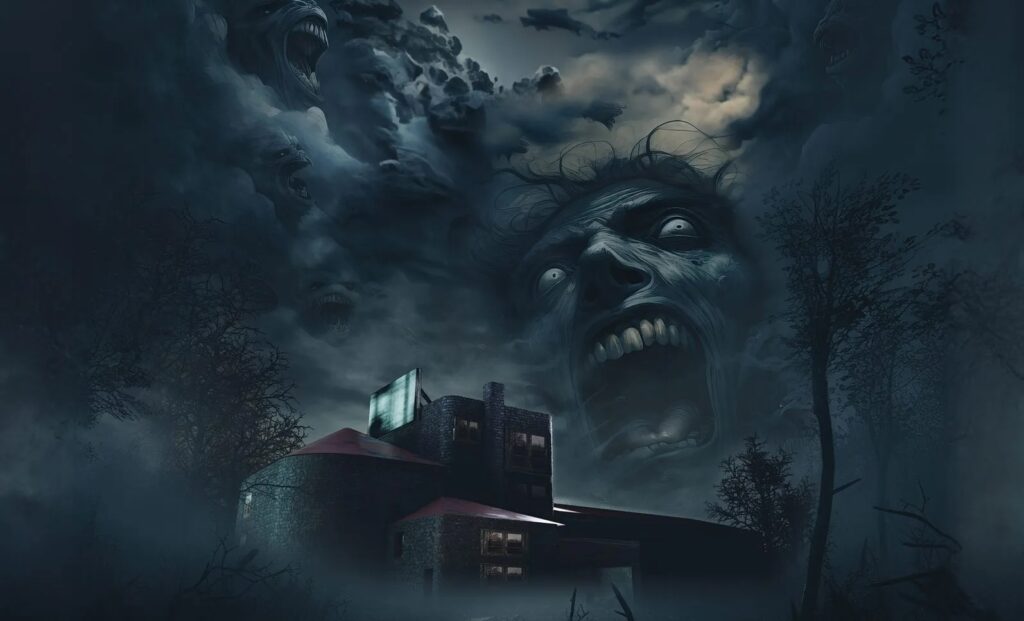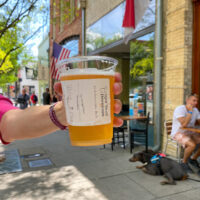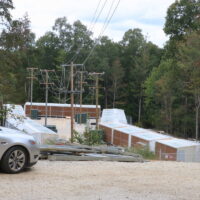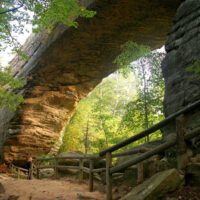It may be the first time a state tourism department has centered an advertising campaign around local legends of aliens invading a small town. Or ghosts at a seed mill in a 1,500-person community. Or mysterious figures in a graveyard – a parade of mourners going nowhere.
Thought to be the first of its kind in the country, the Kentucky After Dark campaign provides visitors with passports and encourages them to visit the small towns, and big cities, in Kentucky that are home to tales of the supernatural and unexplained. Tourism directors hope that the campaign will not just bring people to cities like Louisville and Richmond but to smaller towns like Cadiz, Kelly, and Simpson.

“Rural communities don’t have the money to advertise like larger cities do,” Robbie Morgan, director of the Lawrenceburg/Anderson County Tourism Commission, said in an interview with the Daily Yonder. “This is one-in-a-lifetime money.”
The funding comes from the Kentucky Tourism, Arts and Heritage Cabinet. Using funds allocated to the state through the American Rescue Plan Act, the tourism cabinet set aside funding for various advertising campaigns, Morgan said.
The Kentucky After Dark campaign is one of them.
With $220,000, the campaign will allow smaller communities to participate in a way they couldn’t have before, said Bill Stephens, the executive director for the Trigg County Tourist Commission.
“It’s just a unique way for each of the smaller communities to accentuate something that some people don’t really care about, but there’s still a whole lot of people that find the adventure in tracking down these historic memories,” Stephens said in an interview with the Daily Yonder.
“We’re really small. We’re hoping that [Kentucky After Dark visitors] would come early enough to maybe dine with us and that they may even spend the night with us. Any of those dollars that are left here in our community is something that has a positive impact.”
In Trig County, Kentucky, visitors can visit the Trigg Terror Haunted Seed Mill. The mill was built by Austrian prisoners of war in the 1940s as a seed house for corn. Later, Stephens said, the mill was used for country ham production. Tales circulated throughout the community of mysterious footsteps going up and down stairs, and temperature changes within the house. About six years ago, he said, a man in town decided to take the mill and turn it into a haunted house attraction with actors doing the scaring.
“It’s been going well for the past five or six years. This is a way to promote it and our end of the state down in Western Kentucky.
“This is a really unique opportunity, getting the grant from the state to be able to put this together. In past years, some of the promotions fell so solely upon the local tourist commissions or the visitor centers in those communities. And those dollars a lot of times are tied up in other expenditures. We’ve always tried to support [the haunted house]. What we didn’t have was really printed materials to go out ahead of the season and promote it.”
Promoting scary events during Halloween makes sense – and cents.
According to the National Retail Federation, Americans spent a record $10.6 billion on Halloween last year. A 2022 study of 937 tourists by Passport-Photo Online found that 82% of tourists have been to a dark tourist site in their lifetime, and of the 18% that haven’t, nearly two-thirds (63%) said they had a dark site they wished to visit.
And according to America Haunts, Americans spend more than $300 million annually on haunted houses and ghost-themed tours. A typical haunted attraction averages about 8,000 guests, the group said, with an average ticket price of $25 per person.
“Kentucky has so much rich history – some of which you won’t find on a monument or printed on a plaque,” Morgan said. “There are also travelers eager to get out and explore places they haven’t been before, and a strong interest in thrill-seeking adventures. If you look at the most popular streaming shows today, many of them are true crime and horror or science fiction. To capture some of this audience for Kentucky, we decided to combine all those insights into a campaign that showcases a different side of Kentucky.”
But many of the tales of the supernatural or paranormal happen in small towns that dot the landscape across the country. In Lawrenceburg, Kentucky, the community sees an influx of tourists during the fall who come to the Anderson Hotel – a haunted hotel in the middle of town, Morgan said. In the spring, visitors come for the Wildman Festival – celebrating the area’s many bigfoot sightings.
In the Land Between the Lakes area, locals tell tales of a 7-foot tall Dogman with glowing red eyes that is responsible for missing animals, and maybe several murders, in the area between Kentucky Lake and Lake Barkley. And in Kelly, Kentucky, tales of an alien visit have persisted since the 1940s.
At one time, there was a yearly Little Green Men Festival in Kelly. When it was canceled because of the COVID-19 pandemic, it never recovered, Morgan said.
“Hopefully, with the numbers generated from this campaign, they will be able to revive it and show that things like this do draw in tourism,” she said.
It works in other communities. In Point Pleasant, West Virginia, the Mothman Festival and the legend of Mothman draw in nearly 50,000 tourists a year to the town of just over 4,000 people. During the third weekend in September, the town holds a three-day festival that draws in tourists from all over the world. But officials with the West Virginia Tourism Department said the Mothman legend and other paranormal sites, like the TransAllegheny Lunatic Asylum, the Moundsville Penitentiary, and the Flatwoods Monster Museum, draw in tourists all year round.
Drawing attention to the paranormal tales hasn’t been without some pushback in rural communities, Morgan said.
“There are some people here that don’t want that promoted,” she said. “There’s a real superstition that you don’t mess with this stuff, don’t joke about it.”
The campaign, Morgan said, will help more than just the 12 communities the passport leads visitors to. In Lawrenceburg, it’s not uncommon for visitors to the city’s haunted hotel to book hotel rooms months in advance, Morgan said. And when those rooms fill up, neighboring rural counties benefit.
“All that’s good for Anderson County, but it’s good for the surrounding counties too,” she said. “If they can’t find a place to stay here, they’ll stay in Spencer and Franklin and Washington County. And these are counties that wouldn’t typically see that traffic at all.”
This article first appeared on The Daily Yonder and is republished here under a Creative Commons license.






